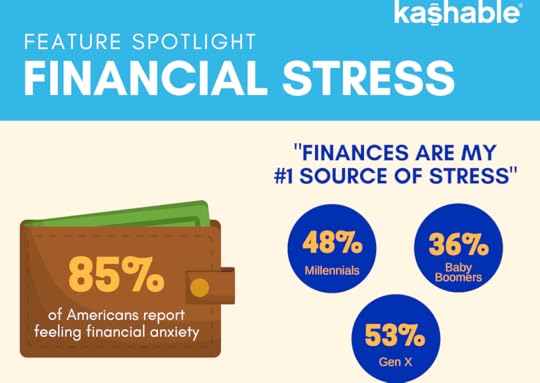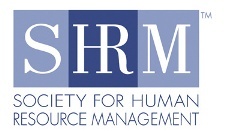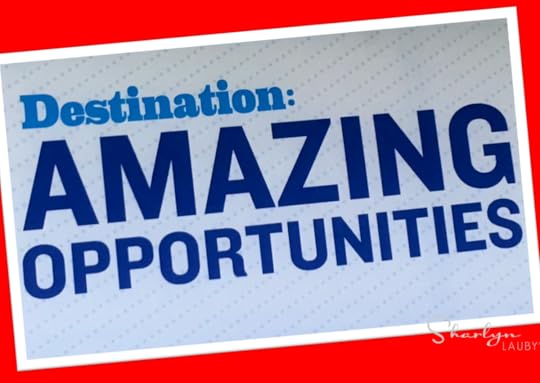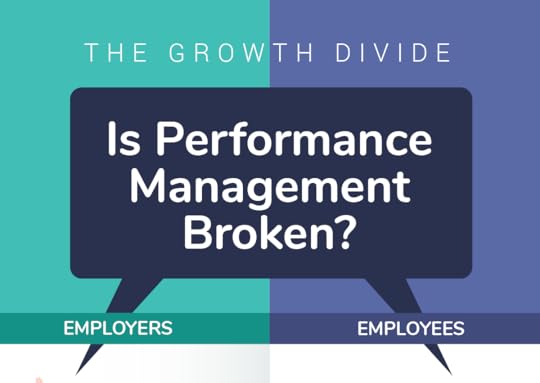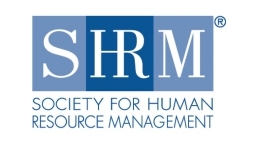Sharlyn J. Lauby's Blog, page 108
November 1, 2018
When Does a Theory Become Outdated
Some of you might be aware that I write training programs. And to design training, I use the ADDIE model. It was developed by Florida State University decades ago as a way to design training for the military. ADDIE is an acronym that stands for Assessment, Design, Development, Implementation, and Evaluation.
There are other instructional design models out there. Michael Allen authored a book titled, “Leaving ADDIE for SAM”, which talks about the ADDIE model of instructional design and proposes a transition to a new model called SAM, which stands for Successive Approximation Model.
Allen’s book contends that ADDIE wasn’t really a great model for instructional design in the first place. With relatively recent trends such as social and informal learning, ADDIE isn’t keeping pace with today’s business demands. His book outlines a new model, SAM, which considers the changing face of learning and business.
Honestly, the jury is still out for me whether I’d “leave ADDIE for SAM” but I did find the book an interesting read. It offered a challenge that merits discussion.
When does a model or theory become obsolete?
I think conventional wisdom tends to suggest that, once a model or theory reaches a certain status, then that’s it. We don’t challenge its application or place in the business world. As fast as today’s world works, I’m not sure if that’s true anymore. Granted, it might take a lot of convincing that an established model or theory isn’t relevant anymore. Or that a particular model needs updating. But I believe we need to get ready for an era of change where classic models and theories are concerned.
This doesn’t mean that learning classic theory shouldn’t happen. Being able to explain the evolution of change when it comes to theories and models is incredibly important. It demonstrates a depth of knowledge about the subject matter.
It also doesn’t mean that the older models and theories were bad or wrong. Older models served a purpose. They taught us things and provided a basis for discussion and discovery.
As we look at the new innovations of our time, I can see moments where we will be forced to challenge conventional models. It will be our responsibility to listen to argument, test the new model and realize the results for ourselves.
In thinking about instructional design, is the ADDIE model passé? I don’t know. Frankly, it works for me. But I need to be open to the idea that someday, I might have to start using a different better model.
P.S. I’m very excited to be facilitating a virtual seminar for the Society for Human Resource Management (SHRM) on L&D: Developing Organizational Talent. We’ll be talking about how to design learning initiatives. Details about the learning objectives can be found on the SHRM website. I hope you can join us.
Image captured by Sharlyn Lauby while exploring the streets of Gainesville, FL
The post When Does a Theory Become Outdated appeared first on hr bartender.






October 30, 2018
Workplace Posting Requirements for Remote Workers – Ask #HR Bartender
(Editor’s Note: Today’s post is brought to you by our friends at Poster Guard , a division of HRdirect and the leading labor law poster service that gets your business up to date with all required federal, state and local labor law postings, and then keeps it that way — for an entire year. Enjoy the article!)
Remote work is more than just a passing fad. In a study by AND CO and Remote Year, more than 23 percent of the remote workers they surveyed said their organization is fully distributed. And technology tools like Slack are helping remote workers collaborate on projects.
But it raises the question, how do organizations communicate with employees when it comes to topics like workplace compliance postings. I know we need to be focused on the work, but we also need to make sure all employees know their rights as required by federal, state, and local law.
I had the opportunity to speak with Ashley Kaplan, senior employment law attorney for HRdirect about this issue. Ashley leads the expert legal team for Poster Guard® Compliance Protection. On a personal note, I’ve known Ashley for years and I’m thrilled to share her knowledge.
Even though today’s post is sponsored, please remember that Ashley’s comments shouldn’t be construed as legal advice or as pertaining to any specific factual situations. If you have detailed questions, they should be addressed with your friendly neighborhood labor and employment attorney.
Ashley, before we talk about the posting requirements for remote workers. It might be good to discuss, in general, the current posting requirements for organizations.
[Kaplan] Sure. All employers must post federal, state, and local (if applicable) postings. The mandatory federal posters include:
Equal Employment Opportunity (EEOC)
Occupational Safety and Health Act (OSHA)
Family and Medical Leave Act (FMLA)
Uniformed Services Employment and Reemployment Rights Act (USERRA)
Fair Labor Standards Act (FLSA)
Employee Polygraph Protection Act (EPPA)
In addition, there could be up to 15 additional state-specific posters, depending upon what state you’re in … and up to 10 additional posters for city/county compliance. Oh, and don’t forget there are additional posters for government contractors and certain industries. The topics for these state, local, and industry-specific postings include minimum wage, fair employment, child labor, unemployment insurance, workers’ compensation, expanded family/medical leave rights, smoking in the workplace, electronic cigarettes, human trafficking, and more.
For HR pros who just read that list and are saying to themselves, “I have no idea if I have the right posters up!” is there a government site that will tell them everything they need?
[Kaplan] Sadly, no. The postings are issued by multiple different government agencies. Believe it or not, HR professionals have to visit each agency’s site to find out posting requirements. There are 175 different agencies responsible for issuing more than 370 posters at the federal and state level. Add to that the approximately 22,000 local jurisdictions that have the authority to issue their own postings. That’s a lot of follow-up and unfortunately, these agencies aren’t required to coordinate efforts.
Okay, so potentially HR pros have several sites to check. But do posters really change that often?
 [Kaplan] Surprisingly, they do. Our Poster Guard legal team monitors posting changes and has found that there are approximately 150 state-specific post changes per year, with half of them requiring mandatory updates. I’m sure that big changes, like minimum wage increases, most businesses are aware of. But businesses need to pay attention to the small changes too because the government isn’t required to notify businesses when those changes happen. Also, be aware that mandatory posting changes are issued throughout the year, not just in January.
[Kaplan] Surprisingly, they do. Our Poster Guard legal team monitors posting changes and has found that there are approximately 150 state-specific post changes per year, with half of them requiring mandatory updates. I’m sure that big changes, like minimum wage increases, most businesses are aware of. But businesses need to pay attention to the small changes too because the government isn’t required to notify businesses when those changes happen. Also, be aware that mandatory posting changes are issued throughout the year, not just in January.
I honestly don’t remember labor law posters being so complex. How do current labor law posting requirements impact remote workers?
[Kaplan] By law, you’re required to provide these mandatory notices to ALL employees. That includes remote workers such as employees who work from home, offsite, on the road, at mall kiosks, in mobile service units, out in the field, and at construction checkpoints.
Does this mean that HR needs to send remote workers full-size laminated posters to hang in their spare bedrooms/home office?
[Kaplan] No, but it does mean that employees need to receive notices. Although the regulations don’t specify the format — paper or electronic — organizations are responsible for communicating the same information to your remote workers as those onsite. For employees who work on computers as part of their jobs, we recommend electronic delivery of postings, where workers can download, view and acknowledge receipt of all required postings. This satisfies your obligation to communicate their rights, as covered in the mandatory federal and state notices.
That raises another question about what information should an employee receive. If a company has remote employees who work in different states, which posting requirements should they follow? Those from the state where the company is headquartered or the state where the employee works?
[Kaplan] Unfortunately, it’s not always clear which state laws apply in this instance. Most basic employment rights — such as minimum wage, overtime and safety issues — are governed by the laws where the employee performs the work. However, depending on how your company is structured, your out-of-state employees may be covered by both states’ laws. Because it depends on so many factors, we recommend you provide both sets of state-specific postings to remote workers in this situation.
What if an organization has some employees who work from home, but they report to the office headquarters occasionally. Do they still need to send posters electronically to the remote worker?
[Kaplan] The law isn’t 100 percent definitive on how frequently a remote employee must access the physical wall posters to be covered. However, FAQs published by the U.S. Department of Labor (DOL) suggest that, if an employee reports to a company’s physical location at least three to four times a month, the physical postings at the business are adequate. If not, the DOL recommends electronic delivery.
Last question, there could be people thinking, “Labor law posters aren’t a big deal. If we don’t have them, we’ll just get a warning.” What’s the penalty for businesses who are not in compliance?
[Kaplan] Recently, the amount for federal posting fines increased to more than $34,000 per violation, per location. State and local fines range from $100 to $1000 each. But the real price tag comes in terms of lawsuits or investigations.
An agency could be on-site for a number of reasons, such as an immigration issue, OSHA inspection, wage and hour audit, or EEOC complaint. The first thing they will do is look for up-to-date postings, and non-compliance can negatively impact the outcome of the investigation.
The real danger is with employment litigation. A missing or outdated posting can impact damages and can even ‘toll’ or extend the statute of limitations. And as your readers know, the statute of limitations can often be an employer’s best friend in defending claims.
A HUGE thanks to Ashley for sharing her experience with us. If you want to learn more about how to make sure your posting requirements are up to date, I hope you’ll check out PosterGuard. Today’s technology makes providing remote workers with their postings easy. They also guarantee their work against government posting fines. Right now, they’re offering HR Bartender readers a discount to try their Poster Guard Compliance Protection service. Just use the code SC28549 at checkout to receive 25 percent off their compliance protection service, and the two products they have for remote workers. The code expires on December 31, 2018.
Compliance matters. It’s important to the organizational bottom-line. And when employees – regardless of whether they work remotely or in the office – know that organizations are transparent about their rights, it creates trust and engagement.
P.S. Mark your calendars! I hope you’ll join me and the Poster Guard team on Wednesday, November 7, 2018 at 2p Eastern for a TweetChat about trends and best practices of working with remote workers. Follow the HRdirect Poster Guard Twitter account (@hr_direct) for more details.
Image captured by Sharlyn Lauby while exploring the Wynwood Wall Art District in Miami, FL
The post Workplace Posting Requirements for Remote Workers – Ask #HR Bartender appeared first on hr bartender.






October 28, 2018
Everything #HR Needs to Know About Prescriptive Analytics
We’ve discussed several aspects of technology in this HR technology series. Today I wanted to share a concept that we should be a bit more focused on: prescriptive analytics. Technology now allows us to do more than just process information, it helps us make decisions.
A few weeks ago, I spent a couple of days with the folks from O.C. Tanner at their Influence Greatness conference. (BTW – Wonderful event. I learned a lot and will be sharing more in the weeks and months to come.) I’ve known O.C. Tanner for years and worked with them when I was the president of HR Florida, the state affiliate for the Society for Human Resource Management.
During the conference, they spent a lot of time talking about the value of prescriptive analytics in the workplace. So, I asked to speak with their principal data scientist Padmashri Suresh, and luckily, she said yes!
Let’s start with a definition. What are prescriptive analytics? And how does it differ from predictive analytics?
[Suresh] Predictive analytics is predicting the most likely outcome of an action. Prescriptive analytics is more pre-emptive in its approach and recommends which of the possible actions or decisions would most likely lead to the desired outcome.
To put this in the context of an HR problem, consider the problem of employee retention. Predictive analytics can help us predict which of our employees are most likely to quit. Prescriptive analytics would prescribe the course of action that is most likely to succeed in retaining these employees.
To help us wrap our heads around this, can you give us another HR-related example of prescriptive analytics.
[Suresh] Apart from employee retention, prescriptive analytics can be used to generate recommendations for training strategies that improve employee productivity, strategies that improve employee engagement, etc. The bottom-line is, if you have reliable and robust data, you can use prescriptive analytics to empower the HR manager in any of the areas that they deal with on a day-to-day basis.
As an HR pro, what is it about prescriptive analytics I need to know? Meaning, do I need to know how the algorithms work?
 [Suresh] When it comes to solutions generated using prescriptive analytics, the most important thing that an HR professional needs to understand is the scope of the solution (i.e. what are the caveats associated with the solution and in what context and scenarios is this solution applicable.)
[Suresh] When it comes to solutions generated using prescriptive analytics, the most important thing that an HR professional needs to understand is the scope of the solution (i.e. what are the caveats associated with the solution and in what context and scenarios is this solution applicable.)
For instance, let us consider the case of Netflix ‘Recommended for You’, a solution powered by prescriptive analytics. Its scope is limited to prescribing customized selection of movies, television shows, documentaries, and other videos for its viewers. But it is not capable of providing music recommendations. Also, the recommendations provided for one viewer will not hold good for others. This level of awareness of the scope and context is sufficient to effectively use solutions that are powered by prescriptive analytics in the HR realm.
Regarding the algorithmic understanding, I don’t think it is essential for an HR pro to understand the math that powers prescriptive analytics. However, high-level understanding of the different types of analytics (i.e. understanding what are descriptive, predictive, and prescriptive analytics) will be useful. A high-level understanding of these concepts will help the HR pro to figure out how best to leverage collaborations with analytic teams within their organizations.
If prescriptive analytics is about suggesting options, do I need to be concerned about the quality of the options?
[Suresh] The concept of ‘garbage in, garbage out’ applies here. The quality of the recommendations made by a prescriptive algorithm will only be as good as the data that is fed into the algorithm which generates these recommendations. So, if you have unreliable or incomplete data, the quality of such recommendations will not be optimal. However, we need to remember that when there is incomplete or unreliable data, whether we get a subject matter expert to look at the data and decide on the course of action, or use prescriptive analytics to arrive at a decision, the decisions will not necessarily be optimal.
On some level, this sounds too good to be true. What’s the downside to prescriptive analytics?
[Suresh] Although I would not call it a downside, prescriptive analytics is an iterative process and requires time to collect data and fine-tune the prescriptions given by the algorithms.
If I want to learn more about the potential of prescriptive analytics, are there resources you can share (i.e. blog post, books, etc.)?
[Suresh] Due to the pervasive use of analytics in all fields and industries today, there are several success stories of businesses that are powered by prescriptive analytics. I think the official blogs of any of the technology big-wigs that use prescriptive analytics, like Netflix, Google, Spotify, etc., are a great place to learn about the impact and influence prescriptive analytics can exert on the bottom line of an organization.
Although not exclusively about prescriptive analytics, another great read would be Nate Silver’s “The Signal and the Noise”. It is a good read for someone who wants to understand the potential of analytics but not necessarily delve into the math of how it is done.
A HUGE thanks to Padmashri for sharing her expertise with us. She didn’t mention it but one of the things that O.C. Tanner does really well is research. If you haven’t seen their 2018 Global Culture Report, you might want to check it out. It shares what over 15,000 employees and leaders across six continents say about the current and future state of workplace culture.
Analytics are the future of HR. As Padmashri said, we don’t need to know the math, but we do need to have an understanding of how prescriptive analytics works. Not only for our role as human resources professionals, but for our role as business partners.
Image captured by Sharlyn Lauby after speaking at the SHRM Annual Conference in Las Vegas, NV
The post Everything #HR Needs to Know About Prescriptive Analytics appeared first on hr bartender.






October 26, 2018
Companies Can Help Employees With Financial Emergencies [infographic] – Friday Distraction
I’ve spent the majority of my career working in industries with large hourly workforces. And much of that hourly workforce was paid minimum wage – or just above it. As a result, when employees had financial emergencies, it impacted their work. Which means it impacted the workplace.
You might have already seen this statistic, but nearly half of Americans do not have enough cash on hand to cover a $400 emergency expense, according to the Federal Reserve’s annual report on the economic well-being of U.S. households. Keep in mind that for some people $400 might not sound like a lot of money, but for others it’s HUGE. A child or parent gets sick and needs to visit the emergency room. Or a car breaks down. Or a refrigerator stops working.
The reason I’m bringing this up is because, as a human resources professional, I’ve been faced with employees trying to get pay advances and loans to cover these kinds of financial emergencies. And sadly, the company’s response has always been “no”. And I get it, the company doesn’t want to get into the loan business. But that doesn’t mean they’re totally heartless about the workplace challenges that money matters create.
Kashable is a company that can help organizations offer their employees with a “Plan B” when emergencies arise. What they do is offer employees low-interest-rate loans that can be paid back through payroll deduction. Employees can only have one loan outstanding at a time, so this doesn’t get to be some out-of-control program for employees (or the payroll department).
There are a couple of things I like about this offering:
For individuals who need to establish a positive credit history, the Kashable benefit can help. As much as we might not like to admit it, having good credit matters. And the way you get good credit is by taking out loans and paying them back … on time.
Employees who need emergency funds don’t need to tap into their 401(k) savings programs. I’ve written before about the challenges ahead when it comes to retirement. We need employees to start saving. The Kashable benefit could help employees build their savings to help with financial emergencies.
If you want to learn more, check out this PLH Group case study and consider asking Kashable for a demo. I did, and thought it was worth my time. I honestly didn’t see a downside to this benefit. Organizations can offer employees a valuable Plan B option for when cash flow is an issue. Hopefully, employees won’t need it. But that peace of mind can help employees focus on their work. Just knowing that it’s there. It could be a win for everyone.
The post Companies Can Help Employees With Financial Emergencies [infographic] – Friday Distraction appeared first on hr bartender.






October 25, 2018
4 Steps for Writing the Perfect Learning Objective
One of the most essential (and challenging!) components to training design is creating the learning objective. If you design training (like I do), then you know it’s one of the first things that stakeholders ask for: “What’s the program objective?” And they don’t want a wimpy objective.
Wimpy objectives use what are considered to be weak verbs. Words such as know, learn, understand, and appreciateare examples of weak verbs. Here are a few examples of poorly written learning objectives:
Understand the four components of a learning objective.
Be able to describe the four components of a learning objective.
Our workshop will provide participants with the opportunity to learn the four components of a learning objective.
Please don’t hate on me for saying it. We all know it. And I’ll admit, upon occasion, I’ve used those weak verbs myself. But there’s a better way.
Now, before I share with you my rule for writing a solid learning objective, I want to have a quick side bar conversation about the term “learning objectives”. Often, we use the terms learning objective and learning outcome interchangeably. Again, I’ve been guilty of this myself. Traditionally, learning objectives are what participants can expect from the facilitator or trainer.
Learning outcomes are what participants are expected to know or be able to do by the end of the training session. They should be specific and measurable.
In today’s training world, I believe the program description is what participants can expect during the learning event and learning objectives are what participants expect to know by the end of training. So for the purposes of this post, we’re calling them learning objectives.
Back to the rule. I use what is called the A-B-C-D method for developing an objective.
A stands for audienceand is fairly self-explanatory. They are the participants.
B represents the behavioror the “thing” that participants need to know or do.
C is for condition, which is the support provided to the learner. It might be a book or job aid.
D refers to degreeor required efficiency level.
Here’s an example:
Given a complete copy of the manual on Instructional Systems Design, the participant should be able to accurately describe the four components on a learning objective without error when given at least three opportunities to do so.
In this example:
A (Audience) is “the participant”
B (Behavior) is “accurately describe the four components of a learning objective”
C (Condition) is “Given a complete copy of the manual on Instructional Systems Design”
D (Degree) is “without error when given at least three opportunities to do so.”
I find this four step process to be a thorough way in developing an objective. Just ask yourself the questions.
1) Who is the intended learner?
2) What do they need to know or do?
3) What kind of support will we provide? And lastly,
4) What is the degree of proficiency they need to have?
So, the next time you have to design training – whether it’s revamping the company’s orientation program or a quick 5-minute refresher for managers on conducting interviews – use the A-B-C-D method to come up with the learning objective. It will really focus your training content and improve your results.
P.S. I’m very excited to be facilitating a virtual seminar for the Society for Human Resource Management (SHRM) on L&D: Developing Organizational Talent. We’ll be talking about how to design learning initiatives. Details about the learning objectives can be found on the SHRM website – just follow the link above. I hope you can join us!
The post 4 Steps for Writing the Perfect Learning Objective appeared first on hr bartender.






October 23, 2018
Candidate Experience: The Importance of Developing a Strategy
(Editor’s Note: Today’s post is brought to you by our friends at Criteria Corp, a leading provider of pre-employment testing services. They’ve recently relaunched their customer interface, HireSelect. It’s been completely reworked to help organizations hire faster and smarter. Get a demo when you have a chance. Enjoy the article!)
We’ve talked before about the need for organizations to have a defined candidate experience. But what does that mean? The “candidate experience” includes all of the touchpoints that a candidate experiences from the time they discover the company until they learn whether they’ve been hired. It’s important to note that the candidate experience includes more than just the company. Every outside organization that the company partners with (i.e. background check companies, pre-employment testing organizations) is part of the experience.
A bad candidate experience can hurt a company’s brand and bottom-line. According to a 2016 Talent Board survey, 41 percent of candidates who received a negative experience indicated that they intended to stop buying products and services from the company. Conversely, a positive candidate experience can benefit the organization in building a strong talent pipeline.
Obviously, it makes sense to have a positive candidate experience. I don’t know that anyone is intentionally trying to create a negative experience for candidates. The challenge is trying to create a candidate experience where individuals feel positively about the company, even when they don’t get the job.
The 4 C’s to Developing a Candidate Experience Strategy
To really have a positive and lasting impact with candidates, it’s going to take a strategy. The candidate experience isn’t simply another HR program, because what happens during the hiring process has a direct link to the employee experience (we will talk more about the employee experience another day.) Everything is related. For the candidate experience, I like to think of the strategy as having four key components which I’m going to call the 4 C’s (current, clear, communicative, and connecting).
1. Current: What I mean by current is being reflective of today’s business world. When I purchase something, very little comes with the product in terms of instructions. How to assemble or activate the item is intuitive.
The same is necessary for the candidate experience. While getting hired is a process, make the process easy for candidates to understand and follow. For instance, if your competitive set is using mobile to accept applications, then it’s possible you’re missing out by not doing the same. So, use technology where it makes sense and brings the most advantage.
2. Clear: A couple of months ago, I wrote a post about the “8 Things Job Seekers Want from Recruiters”. One of the biggest things candidates mentioned was honesty – about the job and the company. Candidates understand that companies aren’t perfect. They do want to know both the good and the not-so-great about a future employer.
Consider putting together a “day in the life” video and posting it on your career portal. It can help employees learn about the company and the jobs available. It can show off some of the company culture.
3. Communicative: This will be no surprise to anyone, but candidates want to know where they are in the process. They deserve to be treated with respect. Even if they’re no longer being considered.
Tell applicants when their application has been received. Communicate with candidates when they’re scheduled for video or panel interviews, so they can prepare. The same applies to when candidates are going to complete an assessment. Tell them in advance so they’re not caught off guard.
4. Connecting: By connecting, I mean letting candidates “connect” with the company. First by creating online talent networks so individuals can hear about job openings. Then once they apply and are called for an interview, connecting can mean touring the office, meeting future co-workers, and getting a chance to see what it would be like to work there.
Another aspect to connecting is allowing candidates to stay connected with the hiring manager and recruiter via email and even on social media platforms like LinkedIn. It’s possible that if the candidate isn’t selected for this opportunity, they might be perfect for another one.
The Candidate Experience Lasts Beyond the Interview
Organizations need to realize that the candidate experience will stay with a person long after the interview. So, make it a good one by creating a strategy. But keep in mind that the candidate experience is only one part of an organization’s overall talent acquisition strategy. It’s equally important to have a sourcing strategy as well as a selection philosophy.
If you’re looking for more ways to step up your recruiting game, I hope you’ll join me and the Criteria Corp team for a webinar on “Standing Out in a Candidate’s Market: 5 Recruiting Strategies for Success”. We’re going to add to this conversation and discuss additional steps employers can take to attract and hire the best talent. The webinar is scheduled for Wednesday, November 7, 2018 at 10a Pacific / 1p Eastern. And if you can’t make the live event, sign up anyway and get the recording. Look forward to seeing you then!
The post Candidate Experience: The Importance of Developing a Strategy appeared first on hr bartender.






October 21, 2018
Retention: Employees Want to Choose Their Own Career Adventure
It’s no surprise that talent management is a key issue for organizations today. And I’m not talking about just in the United States. Employers all over the world are experiencing challenges finding the best talent. But hiring is only one piece of the puzzle. Once you hire that great candidate, now you have to retain them.
That’s why I was very excited to snag an advance copy of Alexandra Levit’s “Humanity Works: Merging Technologies and People for the Workforce of the Future”. I’ve participated on conference panels with her and we’re both members of the Workforce Institute at Kronos advisory board. She’s a super smart business pro and I’m truly honored to call her a friend.
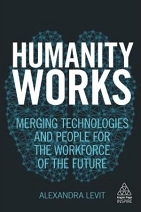 One of the chapters in the book that really spoke to me directly relates to employee retention. It’s the idea that employees want a say in their own career development. Personally, I can’t help but think this is a result of the edict that organizations gave to companies during the Great Recession – own your career development. And employees said, “Okay.” But now employees are saying, “Here’s what we want to develop our careers.”
One of the chapters in the book that really spoke to me directly relates to employee retention. It’s the idea that employees want a say in their own career development. Personally, I can’t help but think this is a result of the edict that organizations gave to companies during the Great Recession – own your career development. And employees said, “Okay.” But now employees are saying, “Here’s what we want to develop our careers.”
My takeaway is that a decade ago when organizations said, “own your career”, they didn’t necessarily anticipate that employees wouldn’t want to give it back. Hate to say it, but my guess is employers thought when they’re ready to get back in the driver’s seat of career management, employees will happily relinquish it. Nope. Sorry, that’s not happening. In “Humanity Works”, there are three reasons presented for this disconnect:
Organizations aren’t sharing with employees what career development looks like and the role they can play.
Organizations are sharing career development roadmaps, but not in a way that resonates with employees.
Organizations don’t have any idea what employees expect when it comes to career development.
It’s important to note that, when we talk about career development, we’re not always referring to promotions. Employees understand that career development is about experiences. I can totally relate to this. In thinking back on my own career, there were opportunities I had as a manager that some vice presidents never get. So here are six activities to think about when it comes to employee career development:
Roles and responsibilities. Again, it’s possible that organizations can’t change an employee’s job title but a little shift in responsibilities could make a huge difference.
Technology. Give employees access to new technology. Employees are accustomed to testing and using various technologies. This doesn’t mean you should not hold employees accountable for data security.
Learning and development. It’s time for organizations to view their training sessions as more than simply training. Organizations can turn these sessions into something more impactful for employees.
Flexible work and sabbaticals. Organizations willing to offer flexible work might find that employees use this time to develop their skills. Holding them accountable for the work (versus the time) could be a benefit.
Job sharing and rotations. Personally, I believe many organizations used to do these things back in the 1990s but have let them fall to the wayside. It’s time to bring them back because when done right – everyone wins.
Temporary assignments and special projects. These opportunities can give employees the chance to use skills they don’t use every day AND meet people in the company they don’t normally work with.
Of course, I’m only sharing a snippet of the takeaways you’ll get from “Humanity Works”. You won’t be sorry ordering this one.
Companies that are waiting for their talent management challenges to disappear are going to be waiting a long time. It’s time for organizations to develop a talent management strategy. One that not only includes how to find the best talent, but how to keep them. Because the last thing anyone wants is to spend company resources finding employees to have them leave after a few months.
The post Retention: Employees Want to Choose Their Own Career Adventure appeared first on hr bartender.






October 19, 2018
Policies and Procedures Must Grow With Business [infographic] – Friday Distraction
There have been numerous articles about how the annual performance review process is broken. Today’s post is not one of those articles.
It is a reminder that, as business professionals, we must change with the times. Meaning we must update policies and procedures to keep current with the change in today’s business environment. For example, not that long ago, the only way we could make a doctor’s appointment was by calling the doctor’s office, waiting on hold for 10+ minutes, followed by speaking with an office worker who would schedule the appointment. Then we would receive a phone call to confirm that we were coming. And when we arrived, we would spend 20-30 minutes completing paperwork before seeing the doctor.
Those days have changed. Mr. Bartender and I recently moved to North Florida and, as a result, we’re establishing new relationships with doctors. We can make appointments online. Get paperwork online. Confirm our appointment via text. Medicine is changing as the technology around us changes.
Today’s infographic, courtesy of Reflektive, shows us the growing divide that’s happening with performance management.
I’m not saying that changes in business necessitate ditching the performance review. I believe performance reviews serve an organizational purpose. However, that doesn’t mean companies should use a 1980s performance review process in 2018. We don’t do that for most other things, why do it for managing performance?
Performance management, like so many other employee-centric processes, need to be brought into current times. It’s not just a nice thing to do. It’s a business imperative. If you want to learn more, download Reflektive’s white paper “The Growth Divide: An Economic Imperative for People Management Innovation”. This might be one of the documents that you can easily circulate around the office to get senior management thinking.
I totally get it. Trying to revamp a legacy process like performance reviews can be tough. Managers are a great place to start when it comes to changing the performance management process in business because they play a huge role in delivering employee feedback. I’m working on a webinar with Reflektive titled, “No Bad Managers: 5 Programs Every Organization Needs to Create High-Performing Teams” that will focus on this aspect of management development. The webinar will be on Thursday, November 1, 2018 at 1 PM Eastern / 10 AM Pacific. And as always, if you already have something scheduled, go ahead and register to get the recording.
The post Policies and Procedures Must Grow With Business [infographic] – Friday Distraction appeared first on hr bartender.






October 18, 2018
Midterm Elections: Why #HR and #Business Professionals Need to Pay Attention
On Tuesday, November 6, 2018, the U.S. has their midterm elections. According to Wikipedia, midterm elections usually have lower voter turnout than the presidential election. Some years, the turnout has been around 40 percent of those who are eligible to vote.
I’ve written before about the importance of being involved in government affairs and the public policy process. What happens in government impacts us personally. What happens in government impacts our organizations, which impacts our work as human resources professionals. To help us understand how the upcoming election could impact our HR role, I spoke with two distinguished members of the Society for Human Resource Management (SHRM) government affairs team. Mike Aitken is senior vice president of government affairs and Lisa Horn is vice president of congressional affairs at SHRM, where they play a key role in advocating on policy proposals that will have an impact on work, workers, and the workplace.
Lisa, my guess is I’m not alone is saying it’s been a long time since my high school civics class. Can you give us a refresher on what a midterm election is and why they exist?
 [Horn] A midterm election takes place between presidential elections and is called a midterm election because it is the midterm of a President’s term in the office. Unlike presidential elections, where the Electoral College determines the presidents, Congressional elections are direct vote by the district and state’s citizens to choose their representative and/or senator. In a midterm election, all 435 members of the House of Representatives and roughly one-third of the U.S. Senate are up for the election. Authority for the midterm elections is set forth in the U.S. Constitution.
[Horn] A midterm election takes place between presidential elections and is called a midterm election because it is the midterm of a President’s term in the office. Unlike presidential elections, where the Electoral College determines the presidents, Congressional elections are direct vote by the district and state’s citizens to choose their representative and/or senator. In a midterm election, all 435 members of the House of Representatives and roughly one-third of the U.S. Senate are up for the election. Authority for the midterm elections is set forth in the U.S. Constitution.
Mike, now that we know what the midterms are, let’s get straight to the point. Why are they important (versus presidential elections)?
[Aitken] Midterm elections determine which political party will govern the House, the Senate or both. Congress largely determines what the legislative agenda is going to be for that two-year term, and therefore, Congress controls the legislative issues that are going to be advanced in the legislature.
I would like to think that everyone is tuned into the news. So, people understand there are lots of reasons to vote in the midterms. What’s at stake from a HR and business perspective?
 [Aitken] Many of the issues that are before the Congress are workplace issues: immigration reform, paid leave, civil rights issues, healthcare reform, and workforce development. These are critical issues to the success of the workplace: for workers and their work. And, who controls the Congress largely determines the structure, focus and response to these very important issues.
[Aitken] Many of the issues that are before the Congress are workplace issues: immigration reform, paid leave, civil rights issues, healthcare reform, and workforce development. These are critical issues to the success of the workplace: for workers and their work. And, who controls the Congress largely determines the structure, focus and response to these very important issues.
Lisa, you and I spoke earlier this year about SHRM’s Workflex initiative . And, SHRM recently introduced the “ We Are Work” campaign . How do issues like paid leave, the skills gap, immigration reform, and workplace equality factor into the mid-terms?
[Horn] The issues raised in the midterms (i.e. healthcare reform, immigration, harassment, workforce development etc.) can motivate individuals to go out to the polls and vote. For example, people may be motivated to vote by one candidate’s perspective supporting a Medicare for all healthcare reform proposal, while another citizen may be motivated to vote based on a candidate’s views on immigration reform.
As a HR professional, where can I learn more about how the mid-terms can impact my work and organization?
[Horn] HR professionals that want to learn more about a candidate’s perspective on these issues should start by visiting that candidate’s website. If they have time, attend televised or local debates and educate themselves on where the candidate stands on these workplace issues. In addition, SHRM has featured articles and information in our newsletters and SHRM’s Member Advocacy website about some of the issues that are being considered in the context of the midterm elections.
Last question. For HR pros who are looking for some information on voting laws in their state, where can they go to find it?
[Aitken] As an HR professional you should be encouraging your employees to learn more about candidates, and how they are on these issues and encourage them to vote on election day. You can find out all the information you need to know about variety of state voting laws on the SHRM Policy Action Center website or by connecting with the SHRM Knowledge Center.
My thanks to Lisa and Mike for sharing their knowledge with us. It’s not easy understanding everything that happens in Washington D.C. As a SHRM member, I think it’s fantastic that not only do we have a voice on Capitol Hill but that the government affairs team takes the time to educate us, so we can play an active role in shaping what happens from an HR perspective.
If you haven’t already, mark your calendar for midterm elections: November 6, 2018. Your vote could impact your job.
Society for Human Resource Management logo used with permission
The post Midterm Elections: Why #HR and #Business Professionals Need to Pay Attention appeared first on hr bartender.






October 16, 2018
Learning Opportunity: FREE #HR and #Payroll eSymposium
(Editor’s Note: Today’s post is brought to you by our friends at Kronos , a leading provider of workforce management and human capital management cloud solutions. Check out the latest research from The Workforce Institute at Kronos how employees across the globe view their relationship with work. Part one, “The Case for a 4-Day Workweek?” explores how employees spend their time on the clock and if the standard 40-hour workweek is most effective. Enjoy today’s article!)
Professional development is important. But sometimes as human resources professionals, we’re so focused on employee and manager development that we forget to carve out some time for ourselves. That’s why I wanted to share with you some information about an upcoming event dedicated to HR and payroll professional development.
Agenda: Kronos HR & Payroll eSymposium
Our friends at Kronos are hosting an HR & Payroll eSymposium on Wednesday, November 14, 2018 from 10 a.m. to 7 p.m. Eastern. It’s absolutely free. (That’s not a typo. It’s really free.) The eSymposium is designed to bring HR and payroll pros education on the topics we deal with most. This one-day experience will offer separate HR and payroll tracks with many sessions eligible for recertification credits (more on that below). As participants, we can follow one track or switch back and forth to explore the topics that we think matter most. I checked out the agenda and there are five sessions that caught my eye, some HR and some payroll.
The True Cost of Bad Hires: HR pros are under increasing pressure to find qualified candidates without sacrificing time-to-fill and cost per hire metrics. But trying to speed up this process can lead to costly hiring mistakes unless companies put the right tools in place to provide a strong candidate experience. Learn how modernizing your talent acquisition processes with a unified, end-to-end technology solution can help reduce your risk of bad hires and create an experience that welcomes, nurtures, and engages new talent.
Competing in an Era of Choice: Today’s HR systems and technologies can help employers meet their “people” goals and demonstrate that the things their candidates and employees value most have been thoughtfully incorporated into the work experience. Find out how these modern systems better enable you to attract the right candidates, develop and retain top talent, and drive engagement and productivity — all while meeting your strategic objectives and providing consumer-like work experience.
Wage and Hour Done Right: The exempt versus non-exempt employee classification issue continues to be a common area of confusion among employers, and it’s important for you to know and follow the rules for properly paying workers. This session will identify key policies to put in place to help ensure that employees and managers understand the details of time tracking and payment of non-exempt employees.
Classifying and Paying Exempt Employees: There has been more attention than ever on proper classification of employees. So how do you know if you’re doing it correctly? This session will look at the most commonly used “white-collar” exemptions and how to determine if any of them apply to your employees. They will also explore how to avoid jeopardizing the exemption and common mistakes such as improper salary deductions and erroneous time tracking. Find out what every employer should know about properly classifying employees.
The Future of HCM: A unified HCM software platform has it all in one system: HR, payroll, talent, and timekeeping. Say goodbye to administrative hassles, poor data quality, limited visibility, and cumbersome employee management processes. And say hello to a single source of truth that can help you hire more strategically, onboard employees faster, drive efficiencies, and deliver a great experience for both you and your employees.
Now, I couldn’t list the entire agenda. This is just a sampling of the sessions being offered. You’re going to notice when you check out the complete agenda on the Kronos website that there are more sessions than time. Don’t let that discourage you!
Can’t Make the Live eSymposium? Listen to the Recordings!
Kronos told me that there will be recordings of each session and you’ll be able to download the session materials. So, if you’re not able to listen to all of the sessions on November 14 OR your learning preference is to listen to one session a week, you can.
As an HR professional, there have been a few times in my career when I’ve been responsible for payroll. Whether you are or not, this is a great cross-learning opportunity. Because the event is free, I could see this as an opportunity to bring in lunch and listen to a session as a group. After the session, the group could do a quick debrief together. It allows HR to learn more about payroll and vice versa.
Bonus! Earn Recertification Credits!
I did confirm with Kronos that participants will receive a certificate for attending.Most of the sessions have been pre-approved for recertification credits with the Society for Human Resource Management (SHRM), the Human Resources Certification Institute (HRCI), and the American Payroll Association. If you’re certified, this event covers the trifecta of learning: 1) free, 2) high quality programs, and 3) approved for recertification credits. You know this doesn’t happen very often.
I can speak from experience that Kronos delivers quality professional development. I’ve attended their KronosWorks conference for a few years now and it always delivers. So, I can say without hesitation that I’ll be signing up for the eSymposium. The price is right and recertification credits are a plus. Hope you will take advantage of this great opportunity as well.
Kronos HR & Payroll eSymposium
Wednesday, November 14, 2018
10 a.m. to 7 p.m. Eastern
Registration and Details:
https://www.kronos.com/about-us/events/kronos-hr-payroll-esymposium
The post Learning Opportunity: FREE #HR and #Payroll eSymposium appeared first on hr bartender.






Sharlyn J. Lauby's Blog
- Sharlyn J. Lauby's profile
- 10 followers







